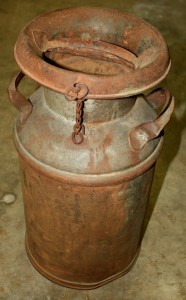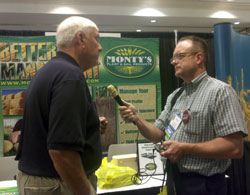 At the Ag Media Summit I visited with Monty’s Plant and Soil Products and Gary Coughlin. Thanks to whoever took the photo and posted it on the Monty’s Facebook page! So I asked him, “What’s new?”
At the Ag Media Summit I visited with Monty’s Plant and Soil Products and Gary Coughlin. Thanks to whoever took the photo and posted it on the Monty’s Facebook page! So I asked him, “What’s new?”
Gary says they’ve just released four new products, Corn Blend, Soybean Blend, Cotton Blend and Tobacco Blend. He says they all contain their humic materials, plant food, liquid sugar and appropriate amount of micro nutrients. They can all be applied in furrow, in the row on the seed to enhance the germination of the seed and soil around it.
You can listen to my conversation with Gary here: Gary Coughlin Interview
2011 Ag Media Summit Photo Album
AgWired coverage of the Ag Media Summit is sponsored by BASF and AgHaven
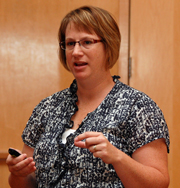 The
The  Dr. Rick Tubbs with Green River Swine Consultants is a practicing vet who serves Tosh Farms, a family-owned hog operation in Tennessee. He presented information on the impact of the modified live PRRS virus vaccine for control of PRRS in an endemically infected continuous flow finish site. He described how they ended up with a PCV2 problem which they dealt with by depopulating finisher sites, moving to a wean-to-finish operation, changing wean age and vaccinating all pigs for PCV2.
Dr. Rick Tubbs with Green River Swine Consultants is a practicing vet who serves Tosh Farms, a family-owned hog operation in Tennessee. He presented information on the impact of the modified live PRRS virus vaccine for control of PRRS in an endemically infected continuous flow finish site. He described how they ended up with a PCV2 problem which they dealt with by depopulating finisher sites, moving to a wean-to-finish operation, changing wean age and vaccinating all pigs for PCV2.
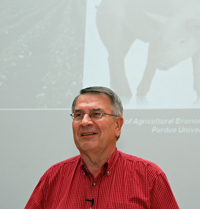 “Hog Economics in the Biofuels Era” was the topic of a presentation by Purdue University economist Dr. Chris Hurt at the
“Hog Economics in the Biofuels Era” was the topic of a presentation by Purdue University economist Dr. Chris Hurt at the  The
The  Nobody talks common sense about animal welfare better than Dr. Temple Grandin of Colorado State University.
Nobody talks common sense about animal welfare better than Dr. Temple Grandin of Colorado State University.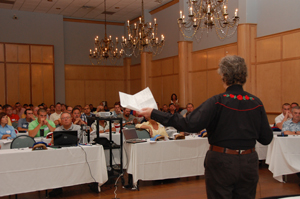 Temple spoke this morning to the
Temple spoke this morning to the 
 Participants on this week’s he
Participants on this week’s he 
